
Calcium Isotopes Correlate With Baleen Whale Feeding Ecology - Martin - Marine Mammal Science - Wiley Online Library onlinelibrary.wiley.com/doi/10.1111/...
05.10.2025 12:47 — 👍 25 🔁 5 💬 0 📌 0@amjukar.bsky.social
Curator of Vert. Paleo @floridamuseum.bsky.social | Curatorial Affiliate, Yale Peabody Museum | Research Associate, Smithsonian’s NMNH | former @uarizona.bsky.social | @georgemasonu.bsky.social & @Reed.edu alumnus. Big fan of nature past and present

Calcium Isotopes Correlate With Baleen Whale Feeding Ecology - Martin - Marine Mammal Science - Wiley Online Library onlinelibrary.wiley.com/doi/10.1111/...
05.10.2025 12:47 — 👍 25 🔁 5 💬 0 📌 0Please tell me y'all still have the Hadrosaurus mount
30.09.2025 02:15 — 👍 1 🔁 0 💬 1 📌 0 24.09.2025 12:30 — 👍 7 🔁 0 💬 0 📌 1
24.09.2025 12:30 — 👍 7 🔁 0 💬 0 📌 1
 24.09.2025 12:27 — 👍 2 🔁 0 💬 0 📌 0
24.09.2025 12:27 — 👍 2 🔁 0 💬 0 📌 0
what type of work does PRI do anyway?
Scholars at PRI work on conservation paleobiology (using paleo techniques to address conservation issues), Macroevolution, Paleoclimatology, modern and paleo marine biology, and Science Education #Geoscience ⚒️🦑🧪

We lost Mark Norell today. Dinosaur hunter extraordinaire. The coolest dude alive. My PhD supervisor.
Wherever you are, raise a glass of your favorite lager or single malt, as it is what Mark would want.
Did Osborn publish this specimen?
02.09.2025 13:47 — 👍 0 🔁 0 💬 1 📌 0
Illustration of a Siberian ibex (Capra sibirica sacin) standing on rocky terrain with faint mountain outlines in the background. The ibex has a light brown to beige coat with darker shading on its face and legs. Its most notable feature is the large, curved, ridged horns that sweep backward in an arch above its head. The animal has a short black beard under its chin and a dark tufted tail. The ibex stands with one front leg raised, highlighting its muscular build and sure-footedness, characteristic of mountain-dwelling goats. The drawing is detailed and colored, with fine shading emphasizing texture and form.
🐐 Proceedings of the Zoological Society of London
London: Academic Press, [etc.], 1833-1965.
[Source]

Jim was an incredible ecologist. I own several of his books, and cite his research reguarly. www.butlernature.com/2025/08/20/j...
24.08.2025 16:57 — 👍 84 🔁 24 💬 1 📌 3
A photo of a Museum preparator standing beside four dinosaur legs. The legs tower above the man, with the two immediately next to him rising to nearly double his height.
It’s Fossil Friday, so let’s get a leg up on the weekend with these colossal limbs! Snapped ~1899, this archival photo from the Museum’s digital collections depicts a Museum preparator standing beside the fossilized limbs of dinosaurs discovered in Wyoming.
22.08.2025 13:24 — 👍 61 🔁 11 💬 4 📌 0
Historical black-and-white illustration titled "Mastodon productus" from an 1877 report, depicting detailed fossilized teeth and bone fragments of a mastodon discovered in New Mexico during the 1874 expedition. The image includes various views of molars with distinct cusps and ridges, jaw fragments, isolated teeth, and a sectioned tusk or bone, all rendered with fine stippling and shading to highlight texture and form. Each fossil element is numbered for reference, arranged neatly on a plain background, showcasing the extinct vertebrate's dental and skeletal anatomy for scientific study.
🦣 Report upon the extinct Vertebrata obtained in New Mexico by parties of the expedition of 1874.
Washington, D.C., 1877
[Source]

🦖📢 Call for Papers!
The Anatomical Record Special Issue: South Asian Paleobiology 🌏
✨ Theme: Fossil vertebrates & evolution on a drifting continent
📅 LOI: Oct 1, 2025 | 📝 Manuscript: Dec 1, 2025
#Paleontology #Evolution #CallForPapers
anatomypubs.onlinelibrary.wiley.com/pb-assets/as...

We have redefined Dolphin Taxonomy 🐬
5 former Lagenorhynchus species have been reassigned to the new/revived and redefined genera:
Aethalodelphis, Leucopleurus & Cephalorhynchus
#marinemammalresearch #globalecology #marineecology
#cetaceans #research #genetics #science 🐋🌱🧪🌐🌏

Diets of bisons and the climate change in the late Quaternary.

Variation of bison occurences through time and the tree cover and climate proxies.
The history of late Quaternary-to recent European bisons:
"The abundance of European bison specimens responded negatively to the extent of forest cover, including Holocene cycles."
onlinelibrary.wiley.com/doi/epdf/10....
🧪 ⚒️ #Paleobio #EvoBio #Macroecology
Human impacts on large mammals went well beyond triggering late Quaternary mass extinctions. A new paper by Brook et al. showing that biogeographic patterns were erased by the spread of domesticated species:
royalsocietypublishing.org/doi/10.1098/...
A related paper is in press. Stay tuned.

🦣 New discoveries at Mammoth Site USA: 2 foot elements— “predigit” & fused sesamoids—found 1st time in extinct elephants. Long known in modern elephants they reveal ancient adaptations for supporting massive land giants
Gardner et al anatomypubs.onlinelibrary.wiley.com/doi/10.1002/...
#FossilFriday

Illustration titled "Mastodon Giganteus" from 1852 showing detailed pencil sketches of a mastodon skull and lower jaw. The upper part depicts the large, elongated skull with a prominent nasal cavity and cavities for teeth roots. Below it, the detached lower jaw displays massive molars with ridged chewing surfaces. The illustration emphasizes the mastodon's robust bone structure, characteristic of this extinct North American prehistoric elephant relative. The artwork is labeled "Plate XVI" and shows artistic shading to highlight bone texture and anatomical features.
🦣 The Mastodon giganteus of North America /.
Boston: J. Wilson, 1852..
[Source]
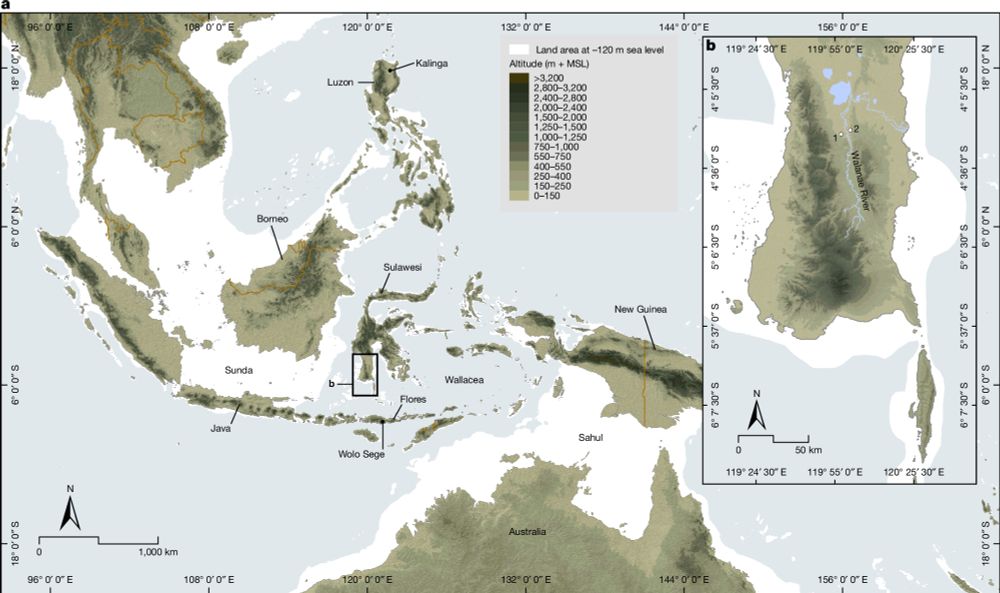
This is incredible! At this point it's only a matter of time before we find early Homo on Sulawesi
rdcu.be/ezCrW
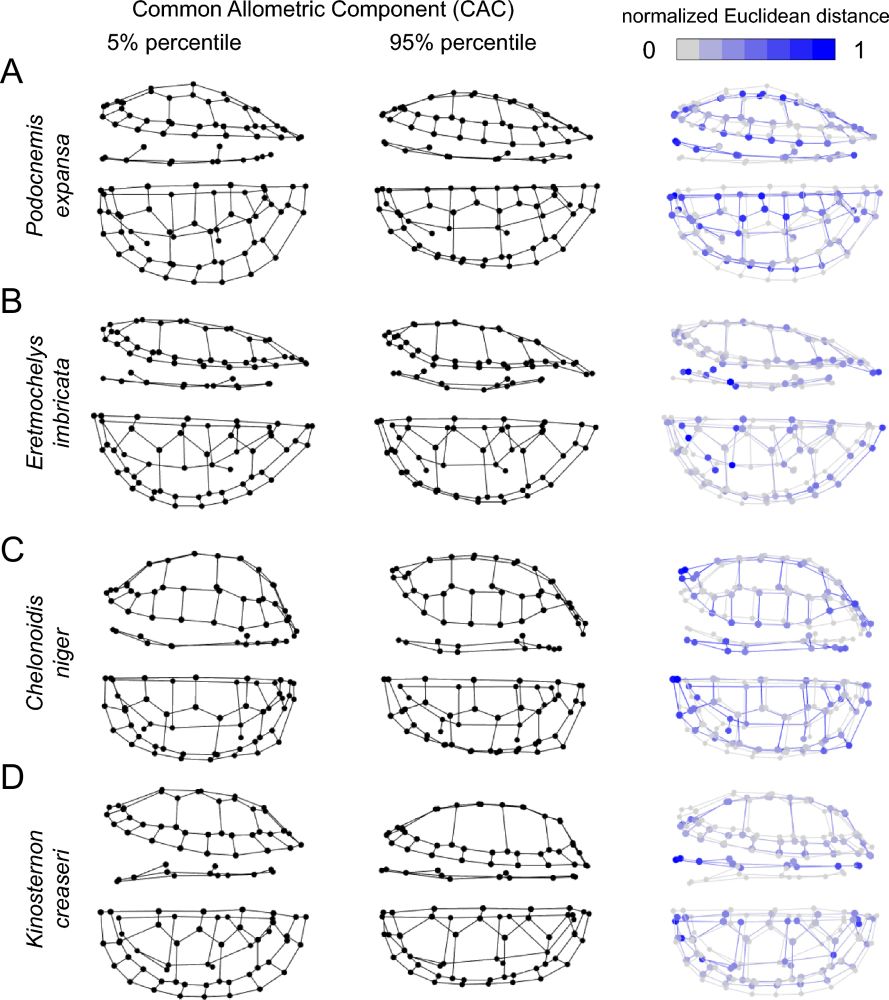
New paper by Guilherme Hermanson & me out: we explore ontogenetic shell shape change in turtles to check if there is a size threshold at which turtles reach adult shapes. This started for a different (in prep) study & was a fun little project w preliminary data
link.springer.com/article/10.1...
Many congratulations!!!
03.08.2025 20:48 — 👍 1 🔁 0 💬 0 📌 0
Potatoes are hybrid, tuberized tomatoes.
Plants are so *weird* , man.
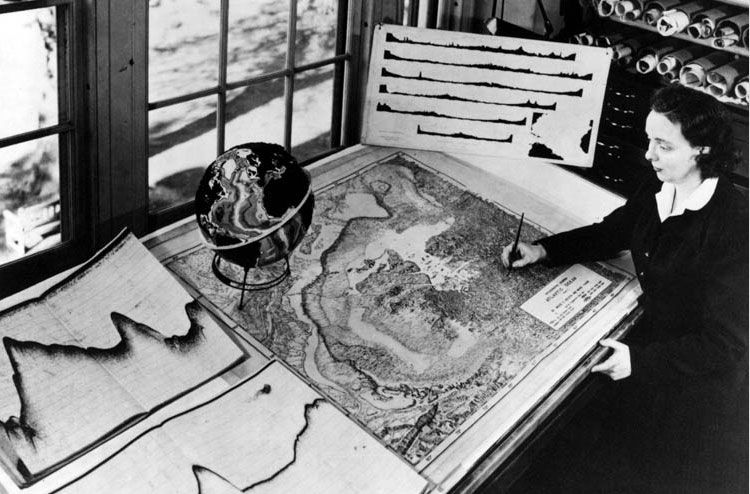
🎂🗺️🎉 Happy birthday to Marie Tharp (1920-2006), a pioneering geologist and oceanographic cartographer who co-created the first maps of the Atlantic Ocean bottom & the World Ocean Map!
👉 Learn more about this incredible #OceanPioneer: go.whoi.edu/marie-tharp
#WomeninSTEM #maps #ocean

Phylogenetic relatedness predicts spatial co-occurrence in Neotropical bats and birds. A new paper by Anikó Tóth with Kate Lyons, Drew Allen, and me. Includes Drew's great new method of inferring interaction processes based on co-occurrence data.
royalsocietypublishing.org/doi/10.1098/...
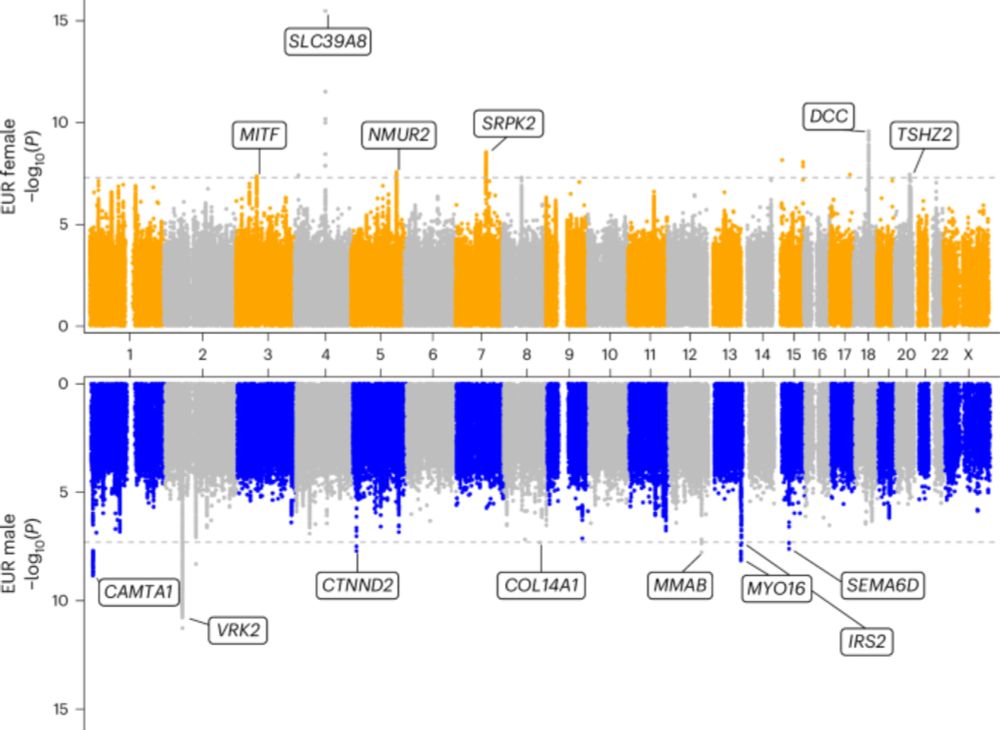
Exciting paper on genetic influences on speech fluency, out now in @natgenet.nature.com. In a big step forward for the field, genome scans of almost 100,000 people with self-reported stuttering, & 1 million controls, identify 57 associated loci. Great work by @piperbelow.bsky.social & her team.🗣️🧬🧪
28.07.2025 11:39 — 👍 56 🔁 21 💬 2 📌 0
Post K-Pg rise in ant and termite prevalence underlies convergent dietary specialization in mammals academic.oup.com/evolut/advan...
28.07.2025 15:56 — 👍 11 🔁 3 💬 0 📌 0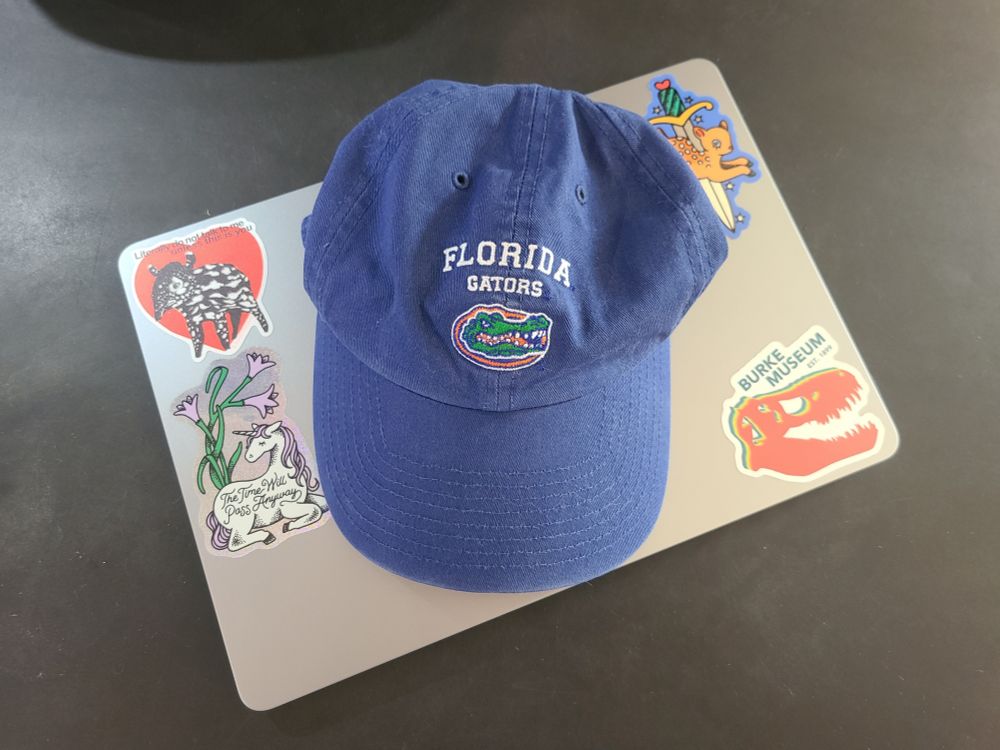
A picture of a slightly worn bright blue denim Florida Gators baseball hat sitting on my laptop, a grey MacBook with various stickers on it. The four stickers include an orange sticker of the Tufts-Love T. rex skull from the Burke Museum, a stylized deer and unicorn, and a tapir calf.

A headshot of me looking cool in front of an old red Volkswagen bus.
I'm ecstatic to announce that I will be joining @amjukar.bsky.social 's lab at the Florida Museum of Natural History to pursue a Master of Science degree this fall semester! I can't wait to start my project on ungulate functional morphology and changing climate in Florida's fossil record 🦏🐫🐎
25.07.2025 20:37 — 👍 4 🔁 1 💬 0 📌 0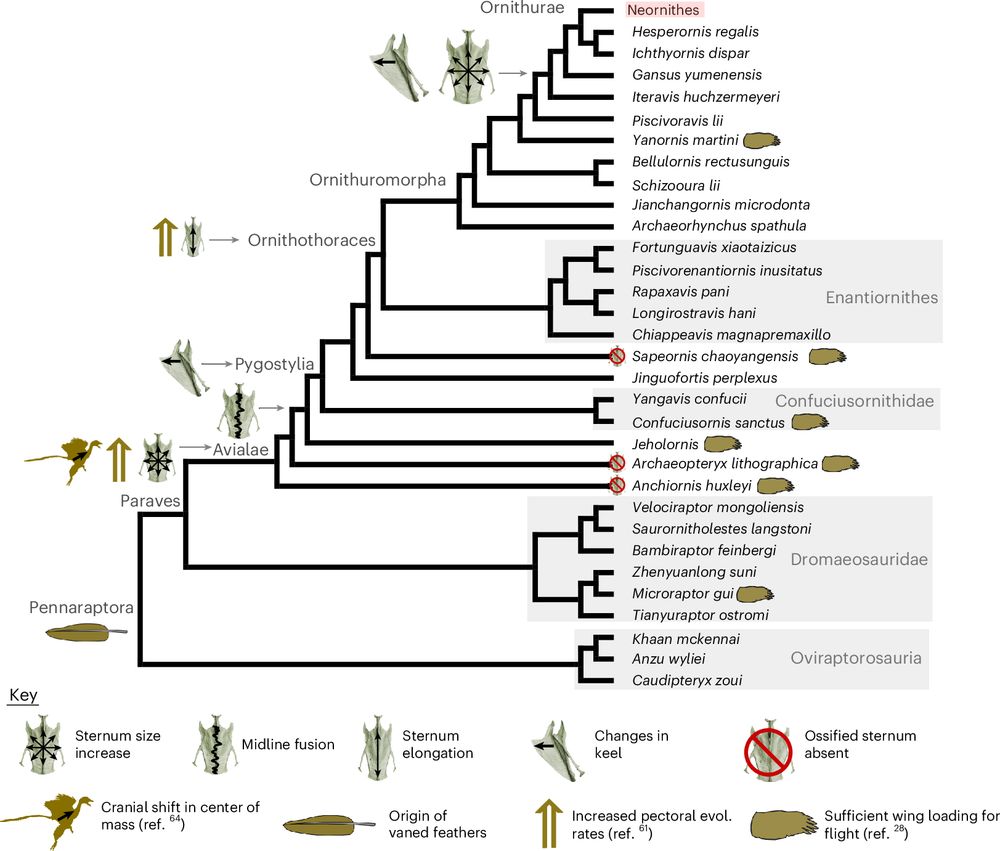
Diagram showing the evolutionary relationships of birds and their close extinct relatives, with icons marking notable evolutionary transformations in breastbone and flight anatomy.
Evolution of the sternum (breastbone) in birds and other pennaraptoran dinosaurs: www.nature.com/articles/s41... 🪶🧪 (📷 @talialm.bsky.social et al.)
24.07.2025 13:02 — 👍 43 🔁 19 💬 0 📌 0
A long-form piece in @science.org covers recent research at Kromdraai, Drimolen, and Swartkrans, South Africa—all adding to the record of Early Pleistocene hominins. The article's lede, “Did they meet” is a bit of a distraction: They certainly met somewhere!
www.science.org/content/arti...
And that paleontologist is me 😂
20.07.2025 14:11 — 👍 46 🔁 4 💬 1 📌 0